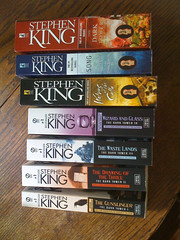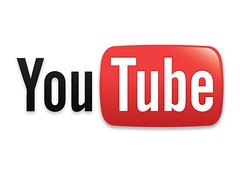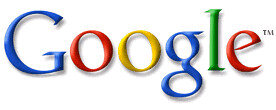"If it wasn’t for these ornaments thou gives me each year, the tree wouldn’t look near as pretty," said Luke, bending with his hands on his knees to inspect the presents. "Which one of these presents is the ornament thou brought this year, ain’t?"
"It’s a small package." To look among the pile of presents, she leaned over as far as she could without dragging the popcorn strings on the floor. "I don’t see it under the tree. Either your father left it in the sleigh, or he dropped it in the snow between here and the barn," Margaret dared to say in a scoffing tease, giving Levi a sideways glance.
"That’s the thanks I get for helping thee, is it?" Levi countered back.
He actually smiled at Luke and her. What a switch! Not that Margaret intended to read anything hopeful into his actions. As long as she’d known Levi, she knew he could go from hot to cold in a second. Oh how she wished no matter how slight it might be that Levi would have a change of heart for the better that would last.
She could tell Luke appreciated his father’s placid mood at that moment, too. "It’s fine. I’ll go look in the sleigh. Daed, would thou please put the popcorn strings on the tree for me? Thou are taller. Thou can hang them higher than I can so the strings are evenly spaced. We need to get that done quick. Poor Aunt Margaret’s arms must be tired. She won’t want to stand like that all night." The boy rushed to the kitchen door. He twisted around. "Just don’t start on the ornaments until I get back. I want to be here for that."
"Never would have thought to wait for you if you hadn’t said so," said Margaret with a teasing laugh.
Luke grabbed his coat from the nail by the kitchen door and put it on. He pulled his gray, woolen mittens out of a pocket and yanked them over his hands. He had his hand on the door knob when his grandfather called after him.
"Take the lantern with thee, Luke. It’ll be too dark in the barn to see the sleigh let along a small package in it. While thou is out there check on the cow again. Save me a trip."
"All right, Dawdi," agreed Luke. Lighting the lantern that hung on a nail next to the coats, he held it out in front of him as he went outside.
"You heard your son, Levi. Start draping these popcorn strings over the branches before my arms give out," Margaret dared to order.
"Daed, thou want to help her?" Levi looked at Jeremiah for a way out.
"Ach! I’m too old. I’ll just watch the two of thee have the fun," Jeremiah quipped dryly, stroking his bushy beard.
Finding no way to decline, Levi sauntered across the room to stand beside Margaret. They looked at each other until she broke eye contact when he took an end that dangled from her arm. As his warm fingertips touched her wrist, Margaret’s skin tingled. Her pulse sped up. She flinched and drew her arm back slightly. When she shrank away, his intense gaze flickered over her face before he twisted back to the tree and looped the string over the branches.
"Levi, the boy seems to be happy," Margaret ventured softly, hoping for a break in the chill of resistance she felt radiating from him at having to be so near her.
Lifting the popcorn string up high to drape it over the branches at the top of the tree, Levi answered, "I told thee he was. No need to spoil that. Not if thou cares for him as thee says." Was it possible that Levi’s voice soften? Or, did she just want to believe that. Was she hearing something that wasn’t there?
"I just want to do what’s right," Margaret maintained.
"For who? Luke or thee?" He searched her face as he took the next string from her arms.
Just for a moment, Levi’s eyes seemed warmer somehow, but his words didn’t sit well with Margaret. She glanced across the room at Jeremiah. His eyes closed, the old man’s head relaxed against his rocker. His shallow breathing lead her to think that he’d dozed off.
Just the same, she kept her biting voice low to keep Levi’s father from overhearing. "That’s not fair. If I was thinking about me, I’d impose myself on you more than one time a year to see Luke."
Levi held the popcorn string in mid air, ready to lay it over a bough. He twisted toward her and retorted, "Strong willed as thee are, Margaret, peers to me if thou wanted to have done that, not much way I could have stopped thee. Always thought that lawyer man thou married had more to do with thou not protesting how often thee comes to see Luke than the shunning did."
"Don’t blame this on my husband after all these years. You’re the one who said that once a year was all I could come," insisted Margaret, feeling her efforts to defend herself futile, but she felt the need to try.
"I did say that," Levi agreed vehemently. "That should have been the last time I spoke to thee as long as thee are under the shunning. I had to kneel for confession before the bishops soon after talking to thee to keep from being shunned myself. I confessed to permitting thee to stay here this week in December. Thou could have gone before the bishops also if thee had the desire to lift thy shunning. That would have made things so much easier for both of us." He made a wide scallop of the string over the boughs and turned back to her for another string.
Margaret noticed he purposely didn’t continue with what he had to be thinking. Lifting the shunning also included the fact that she would have to come back to live with the Plain people. That was the only way. Levi knew that wasn’t an option for her because of her marriage to Harry.
When he did finally break his silence it was to rehash their agreement. "If thou recalls, thee is the one who picked the week before Christmas to visit Luke. The day also happens to be Luke’s birthday. Not just one, but two very important days in that little boy’s life that I allowed thee to be here with him." Levi hadn’t mince words. He stooped to drape the last string over some of the tree’s lower branches.
"Luke needs a woman in his life, Levi," Margaret stated quietly to his broad, strong back.
Levi straightened and spun to face her. "Faith gave that right up when the boy was small. As far as Luke knows she died. We are going to keep it that way." His narrowed eyes froze her. "Thou didn’t want the job either as I recall," he said curtly, wanting to make how he felt very clear.
"You never understood." Margaret lowered her gaze. Even if she could get the words out, it was way too late to defend her reasons for giving away Luke. She bit her lower lip to stop it from visibly quivering. She couldn’t cry now. She’d appear weak. The only way to stand up to Levi Yoder was to remain cold and strong just like him. She’d learned that a long time ago. Never give that man the upper hand where Luke was concerned. She wanted the child in her life no matter how short a time she had with him. But she knew if she angered Levi beyond reason, the man was as good as his word. He’d never let her see her son again.
Levi glanced toward the kitchen. "Seems like it’s taking my son too long to find that ornament. It’s cold out there. I should go help him. Maybe something’s happened with the cow." He started toward the kitchen.
Margaret thought, feeling let down because Levi had tried to put a damper on her pleasant evening. Levi speaks bluntly and runs away.
Chapter 5
Levi paused with a hand on the door facing and stared into the dark kitchen. He whirled around. With his head slanted to one side, he studied Margaret. "Tell me the truth for once. Why didn’t thy husband come with thee this time?"
Margaret didn’t know how much longer she could hold up under Levi’s probing. She wished he’d just leave the subject of Harry alone. She gazed at the floor while she rubbed the prickly feeling away in her left arm caused from holding it out straight so long. She always felt as if Levi could read her mind. He certainly could tell if she chose to lie to him. In a barely audible voice, she broke the vow of silence she’d made to herself on the trip out from town. She blurted out, "Harry left me."
"Did he?" Surprise was in his voice. "The lawyer man did know the truth?" Again Levi’s slanted eyes raked over her face as he questioned her, trying to read her mind before she answered him.
She hated that Levi kept pushing. If being truthful was what he wanted, she’d be truthful since he asked. Maybe he would ease up on the way he treated her if he knew the truth.
"Not until a few days ago," she admitted.
Levi pounced in front of her. He poked his finger under her chin and raised her head so she had to look at him. Gazing down at her, he asked incredulously, "Maggie, thou never told him before this?"
Out of words, Margaret shoved his hand away and lowered her head. She nodded no slowly, contemplating the one word she’d just heard that surprised her. In the midst of this heated discussion, Levi called her Maggie. The mention of that long ago term of endearment was a reminder of happy times in her youth. For many years now, Levi hadn’t used the nickname when he spoke to her. She had always felt lucky if he managed to call her Margaret Goodman. But now that he was so worked up, he didn’t seem to realize he’d called her by her nickname. Strange what it took to rattle this man. He remained cold and distant or angry when discussing his son with her but seemed on the edge of exploding when he talked about her husband.
Levi grabbed her by the shoulders and shook her as if that would dislodge her answer. "Why not?"
"Because I knew Harry finding out about you and me would hurt him. I feared he’d leave me," Margaret stated flatly, pulling away from his rough grip.
"Ach! Why tell him now then?" Levi said with a frustrated sigh. "If thou thought that, just leave the truth hidden. The fewer Englishers who know the better. Burn thy sister’s devil book and let well enough alone."
Margaret’s admission came painfully slow, because she knew it would only infuriate Levi further. "Because I promised Faith I’d give Luke the journal this year. If Luke was to know the truth now, I had to tell Harry first. Eventually, you know very well my husband would have found out somehow if I hadn’t. To find out from someone else wasn’t fair to him. It would have hurt Harry much more than my telling him."
"Is what’s in that journal thy only reason for telling Harry Goodman?" Levi asked, searching her face as though he expected more.
She didn’t understand. "What other reason would I have?"
Levi stared at her. His unwavering eyes filled with sadness. "Thou should have stayed home with thy husband this time. If thou had kept silent, his leaving thee would never have to be. Now what are thou going to do when thee leaves here?" Levi’s voice held a note of concern. In his eyes was tenderness. His face soften while he waited for her reply.
Or was she imagining his feelings toward her changed. She’d wished for that to happen for so long. Her resolve to be cold and defiant melted away. She wasn’t used to this type of emotion from him. He hadn’t displayed a hint of gentle feelings toward her in years.
Margaret sighed deeply. "Perhaps you’re right about me not giving Luke the journal. He’s well and happy with the way he believes things to be. After all these years, surely Faith is gone for good. What difference could it make to her now if I didn’t carry out her wishes if that’s the way you want it. I’ll give what you say some thought in the next few days. As for me, you needn’t worry. Harry gave me the house so I have a place to live. He’s using the time I’m here to move his things out." She sighed again. "The worst part will be trying to explain to the busy bodies in town why my husband left me. They’ll notice sooner or later."
"Don’t try to explain. Tell them it’s none of their business. Or better yet just ignore them," Levi said, his tone soft and husky.
"If only that would work," she said, doubtfully.
Suddenly, Margaret felt so very weary from the weight of her world being turned upside down. One thing she was certain of, she could only blame herself for what had happened to her
recently. Her sister, Faith, wasn’t there to blame for her misfortune this time. She sagged closer to Levi. He placed his hands gently on top her shoulders. His gaze didn’t budge from her face as he slid his hands until he touched her throat. With his thumbs, he caressed her neck. Mesmerized by his gaze and touch, Margaret felt helpless to pull back even if she had wanted to. Her pulse pounded under his thumbs. Levi lowered his head close to hers. He tucked a finger under her chin to lift her head up. She held her breath, daring to hope that Levi intended to kiss her.
"Oh, Maggie, —-," he whispered.
At the sound of Luke’s footsteps in the kitchen, Levi dropped his hands to his side. The boy watched his father glide away from Margaret. Luke paused in the doorway. Fearing tension between Levi and Margaret, the child hesitated in the door. He’d been raised with the belief that harsh words and raised voices were a forbidden sin. Margaret knew the only time heated moments occurred around Luke was when she visited. She saw the alarm on the child’s face. She hated what Levi and she did to him. They continually tugged that little boy back and forth between them like a piece of pulled, molasses candy.
Luke looked from his father to his aunt and back. In one hand, he held a small, snow covered package. In the other, he grasped a black book bound with twine.
Margaret’s breath caught.
Levi let out a low groan.
"The journal must have slid out from under the sleigh seat where I hid it," whispered Margaret out of the corner of her mouth to Levi. "He mustn’t read it yet."
"Come on in and warm up, son. Cold out there tonight, ain’t?" Levi invited, holding his hand out to encourage his son to enter the room.
Always the same pattern,

 Other writers believe that ideas are easy, it’s in the execution of those ideas that the hard work really begins. You have to show up every day and slowly give shape to your ideas, trying to find just the right words, searching for the right turn of phrase, until it all morphs into something real.
Other writers believe that ideas are easy, it’s in the execution of those ideas that the hard work really begins. You have to show up every day and slowly give shape to your ideas, trying to find just the right words, searching for the right turn of phrase, until it all morphs into something real. “If you want to be a writer,” says Stephen King, “you must do two things above all others: read a lot and write a lot.”
“If you want to be a writer,” says Stephen King, “you must do two things above all others: read a lot and write a lot.” Wikipedia:
Wikipedia:  YouTube.com: Now you can get a cheap Flipcam or iPod Nano with video, it is easy to get on YouTube. You can also use your webcam for a static picture, or build your own video using stills and music. Here’s
YouTube.com: Now you can get a cheap Flipcam or iPod Nano with video, it is easy to get on YouTube. You can also use your webcam for a static picture, or build your own video using stills and music. Here’s 

 Apple.com. You can get into the Apple Store in a few ways.
Apple.com. You can get into the Apple Store in a few ways.